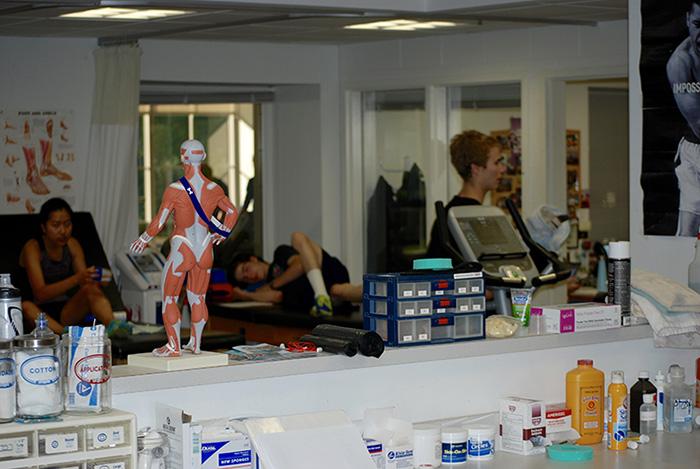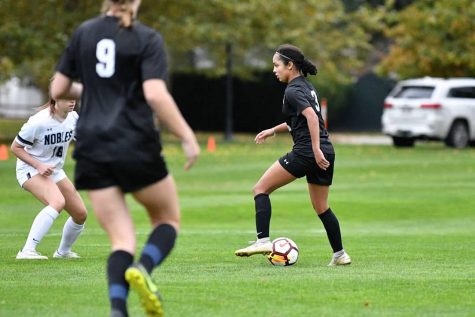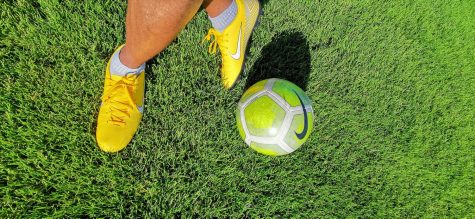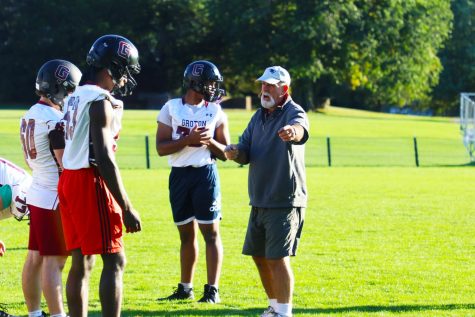Four Most Common Sports Injuries at Groton
Students at the trainers’.
On the athletic field, intense competition means working and fighting hard. However, the consistent tough play brings our athletes to the training room in the AC. According to athletic trainers Art Cheeks and Christine Alarcon, here are the four most common injuries so far this fall season.
- Strains
The number one injury that has pulled athletes off the field and over to see the trainers is strains. A strain is a pulled muscle, and can happen anywhere on the body. “We have had a lot of strains this year, particularly in quadriceps and hamstrings,” Cheeks said. Soccer and Field Hockey are the most common sports in which strains have occurred. The main cause of strains is overuse of the specific muscle. Thus, it is often in the following week of preseason that most athletes pull their quads, hamstrings, groins, or glutes. Recovery requires heating before play and icing afterwards in order to strengthen and rejoin the muscle fibers.
- Contusions
Runner up of the group are contusions, sending more players in for ice bags and heating pads. A contusion is a bruise, typically caused by any forceful impact. This means a direct hit in football, a rocket of a field hockey drive right to the thigh, or a soccer ball shot to the arm. Contusions can form a deep bruise on a muscle. Any extra pressure put onto the contusion as it is still forming will slow the healing process. In order to stay strong and fully able to play, the bruises will be treated by icing initially and, later, time in the heat whirlpool.
- Sprains
Next on the list are sprains, more often than not resulting in sitting out from practices or a game. Because of the greater severity of this injury, recovery requires more than just icing and heating. A sprain is when ligaments, which connect bone to bone, are overstretched or overstressed. Most commonly occurring in ankles, sprains are results of twisting or an overextending fall. Typically, the area of the sprain will swell and any weight put onto the sprain will further injure it. Many athletes cannot bend their sprained ankles in certain directions, and must wait for the swelling and stiffness to fade before returning to play. Recovery time may range from a few days to a few weeks.
- Fractures
Most severe of the injuries are fractures, however they less common than the previous ones mentioned. Fractures are any crack in a bone, and can be fully or partially broken. Caused by great pressure on the bone, fractures arise in sports where direct contact or impact may occur. So far this fall season, fractures have occurred in wrists, legs, foots, clavicles, fingers, tibias, toes, and forearms. Recovery time is the longest for fractures. It typically involves wearing a boot, cast, sling, or crutches and can even require physical therapy. Athletes must rest these injuries and sit out from practices and games until the bone has healed. A common stress fracture is shin splints, often a result of overrunning. Three-year cross country runner Annie Colloredo-Mansfeld ’18 shared about her injuries, “I suffer from them consistently every cross country season. It feels like sharp pains inside my shin whenever I start moving at a faster pace.”











